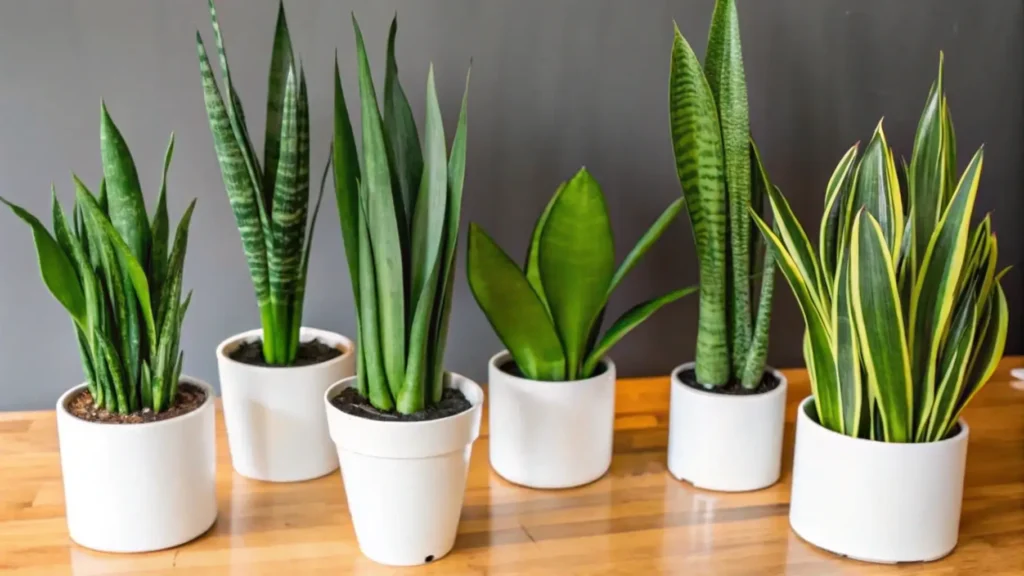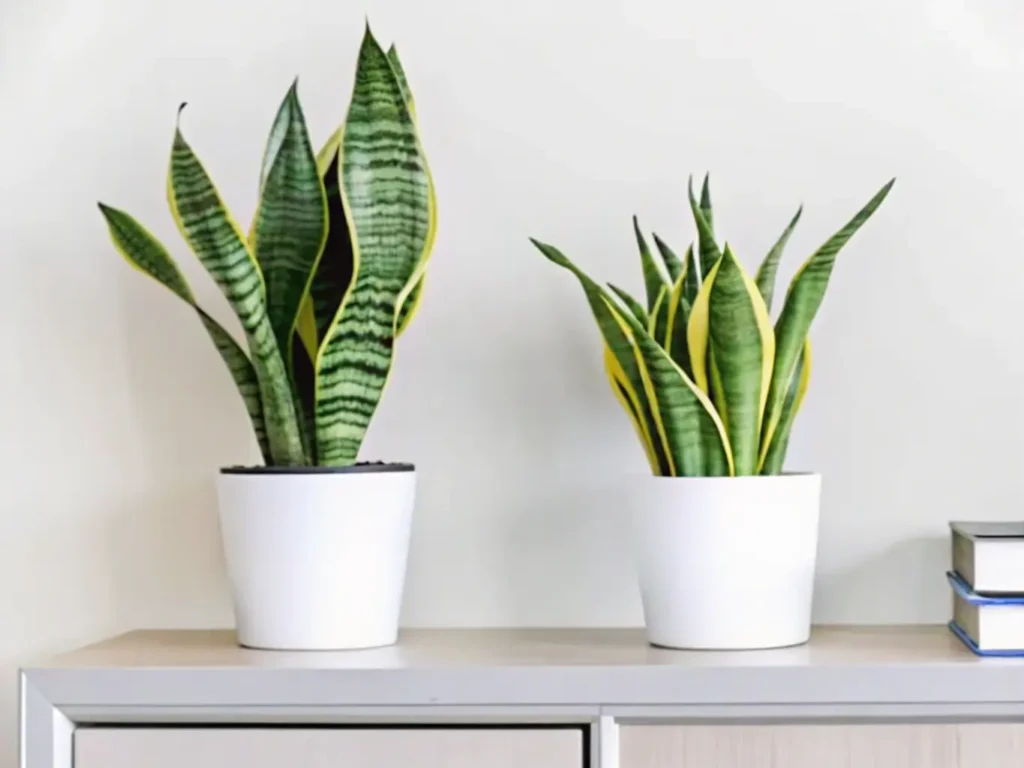
I always marveled at the tall, striped leaves of the snake plant. It’s stylish, easy to grow, and thrives with minimal care. Yet, there’s something many of us overlook: these popular houseplants contain compounds that may irritate humans and animals. In this introduction, we’ll examine “Why Are Snake Plants Toxic?” and uncover how to protect yourself, your kids, and furry friends from potential saponin-induced irritations. Get ready for practical guidance.
Table of Contents
Understanding the Snake Plant
Defining Sansevieria
Snake plants, or mother-in-law’s tongue, belong to the Dracaena family toxicity group of common household toxic plants. They show off thick, upright leaves with green-and-yellow patterns. They’re popular because they’re:
- Drought-tolerant
- Happy in low light
- Slow-growing yet eye-catching
Despite their cool looks, I keep wondering, why are snake plants toxic? They might seem harmless, but there’s more to these plants than meets the eye. When I first brought one home, it thrived like a champ. No fuss, no wilting, just bright leaves that stood tall.
Popular Varieties and Nicknames
Bird’s Nest snake plants have short, compact foliage. African Spears are skinnier and cylindrical. Almost all of them share the nickname mother-in-law’s tongue, probably because those leaves can be extra pointy. Regardless of type, they’re super easy to place in modern décor, thanks to their sleek form and forgiving nature.
Why Are Snake Plants Toxic?
Saponins: The Main Culprit
So, why are snake plants toxic? Well, one primary reason is the presence of saponins. These natural chemicals help the plant shoo away pests. Unfortunately, those same chemicals can cause digestive issues if we ingest them. I witnessed a friend’s kid nibble on a leaf—major oops! The child complained about a weird taste and had a minor upset stomach.
If you’re still thinking, “But why are snake plants toxic?” the answer lies in how saponins protect the plant. They’re part of plant-based chemical irritants. While a nibble might not land you or your pet in the ER, it can bring on:
- Mild vomiting
- Nausea
- Mouth or throat inflammation
Other Substances
In addition, these plants contain small amounts of organic acids, which can irritate sensitive skin—especially if you’re prone to indoor plant allergies. One time, I accidentally rubbed my eye after trimming a leaf, and oh boy, did that sting. It passed quickly, but it was a lesson learned: always wash up after handling poisonous houseplants.
Ultimately, why are snake plants toxic? They contain saponins and related compounds that, when ingested or rubbed into sensitive areas, can provoke unwelcome reactions. They won’t bring down a healthy adult with minimal contact, but it’s worth showing a bit of caution when caring for or displaying these stylish greens.
Historical and Cultural Context

Traditional Uses of Mother-in-Law’s Tongue
Centuries ago, people used the strong fibers from mother-in-law’s tongue for crafting rope and weaving baskets. I haven’t tried it myself, but I’ve heard the fibers can withstand quite a lot. This everyday practicality put snake plants on the map long before they became the Instagram darlings they are now.
I always come back to the question, why are snake plants toxic? Even historically, folks recognized they had certain “protective” properties—both physically (the fibers) and chemically (those saponins). In some herbal traditions, crushed leaves may have been used topically, though that’s not something I’d attempt today.
Cultural Beliefs and Symbolism
Some regions see snake plants as good-luck charms that ward off negative vibes. Whether you’re a believer or not, it’s intriguing that these tall leaves often stand guard in homes around the world. I have pals from different cultures who place them near entrances to “shield” the house from bad mojo.
Maybe it’s purely symbolic, but it’s neat to think of them as silent protectors—even if we have to remember that why are snake plants toxic? Because they contain compounds that can upset our systems if ingested.
Symptoms of Toxicity in Humans
Mild Irritation vs. Tougher Reactions
But why are snake plants toxic? Because the leaves hold saponins and acids that don’t play nicely with our bodies. Touching an intact leaf is usually fine, but sap exposure or leaf ingestion can cause:
- Tingling or burning in the mouth
- Sore throat
- Minor skin inflammation
- Queasiness if swallowed
I once tried wiping off a cut leaf barehanded. Minutes later, my fingers felt itchy. It wasn’t dire, but I’ve been cautious ever since. Little ones who put things in their mouths might be at higher risk for more intense side effects.
When Issues Escalate
Severe responses are less common but include persistent vomiting, diarrhea, and puffy lips or throat. If someone experiences these symptoms, consider medical help. Most individuals bounce back quickly, though. I say the best strategy is to handle snake plants with care and keep them out of kids’ reach.
If you’re thinking about plant placement, check Where Should I Put My Snake Plant in My House? for tips. Setting your mother-in-law’s tongue on a higher shelf or using a plant stand might limit the chance that curious youngsters grab a leaf. Don’t forget to wash your hands if any sap drips during pruning or cleaning. Prevention is a simple yet effective approach.
How Snake Plants Affect Pets

Are Snake Plants Toxic to Cats and Dogs?
So, why are snake plants toxic? In short, these saponin-laden leaves can upset your pet’s system, too. Cats, dogs, and even some small critters often find leaves irresistible. A bored kitty could chew on a snake plant, leading to:
- Drooling
- Stomach distress
- Changes in appetite
- Occasional vomiting
I’ve heard from fellow pet owners who caught their dogs sneaking a chomp. Usually, the result was minor but still worrisome. If you want to avoid freak-outs at 3 AM because your pup can’t stop drooling, keep this plant out of paw’s reach.
Signs of Poisoning and First Aid
If you suspect your pet swallowed a piece:
- Stay calm.
- Check what’s missing from the plant.
- Call your vet or contact a pet poisoning hotline.
- Follow through with recommended steps.
For more concerns, peek at What is the disadvantage of snake plants? to see if you’re ready for the full scoop on possible downsides. Most pets recover quickly with basic care, but it’s always better to be safe than sorry—especially if you’ve got a nosy furball at home.
Safe Handling and Preventative Measures
Tips for Growing Snake Plants Indoors
Despite the question why are snake plants toxic? they’re famously straightforward to grow. I like them because I can forget to water for a week, and they’ll still look strong. Here are my personal guidelines:
- Wear gloves while pruning or repotting.
- Allow the soil to dry between waterings.
- Use moderate to low light—they adapt surprisingly well.
- Keep them away from pets to avoid midnight chomping.
Child Safety and Resources
If you have curious kiddos, maybe tuck the plant behind furniture or place it on a tall stand. Show them which plants are “look, don’t touch.” If you need more general poison prevention help, the CDC resource has great pointers. Remember, why are snake plants toxic? Because of their protective compounds—it’s up to us to minimize unwanted run-ins with saponins.
Alternative Non-Toxic Houseplants
Comparing Snake Plants with Calatheas & Spider Plants
But why are snake plants toxic? It’s mainly about saponins, so if that concerns you, you can grab a few pet-friendly plants. My recommendations:
- Calatheas: Gorgeous patterns, love humidity, safe for pets.
- Spider Plants: Hang gracefully, often amuse cats without harming them.
- Boston Ferns: Full, fluffy foliage and minimal risk.
- Parlor Palms: Tall and elegant, minus the toxicity drama.
I used to have a snake plant in my living room, but I replaced it with a spider plant once I adopted my cat. Now my cat bats at the spider plant leaves, but no issues arise—way less stress overall.
Choosing Pet-Friendly Greenery
Whether you want those upright leaves or prefer a draping style, there’s a safe alternative to snake plants. If your heart’s set on mother-in-law’s tongue, no worries—just put it somewhere pets and children can’t easily reach. Otherwise, try mixing pet-friendly options for peace of mind. Honestly, you can still rock a stylish interior without risking an unexpected vet visit because Fluffy decided it was snack time.
Environmental Benefits of Snake Plants

Air-Purifying Qualities
Some folks say snake plants help clean indoor air by filtering toxins like formaldehyde. Scientific studies show they do absorb trace amounts, though the effect in a typical home might be small. Generally, houseplants enhance indoor air, and snake plants, in particular, produce oxygen at night—which I find pretty awesome.
Low-Maintenance Traits
Part of why I appreciate them is the low-maintenance factor. You won’t have to water them constantly, they rarely get swarmed by pests, and they adapt if you move from one dim apartment to a brighter one.
Less stress, more greenery. However, because why are snake plants toxic? well, that’s a trade-off for their natural pest defenses. If you’re mindful of that, they can be a breeze to care for. Sometimes, a hardy plant that requires minimal attention is worth a slight risk, especially if you keep it somewhere safe.
FAQs
Are snake plants dangerous to touch?
Generally, no—touching intact leaves is harmless unless you break a leaf and get sap on your skin. A mild rash might happen if you’re sensitive, so wash your hands for good measure.
Can snake plants cause skin rashes?
Yes, if the sap contacts open skin or you’re especially prone to houseplant allergies. Usually, any redness or itching is brief.
What should I do if my pet eats a snake plant?
- Stay calm.
- Check how much is gone.
- Immediately consult a trusted veterinary professional or contact a dedicated pet poison helpline for guidance.
- Follow their advice.
How toxic are snake plants compared to others?
They’re milder than, say, dieffenbachia or oleander. Still, why are snake plants toxic? Because they hold enough saponins to provoke stomach troubles in pets and humans. In other words, why are snake plants toxic? They use these compounds for self-defense, which can irritate our bodies if swallowed.
